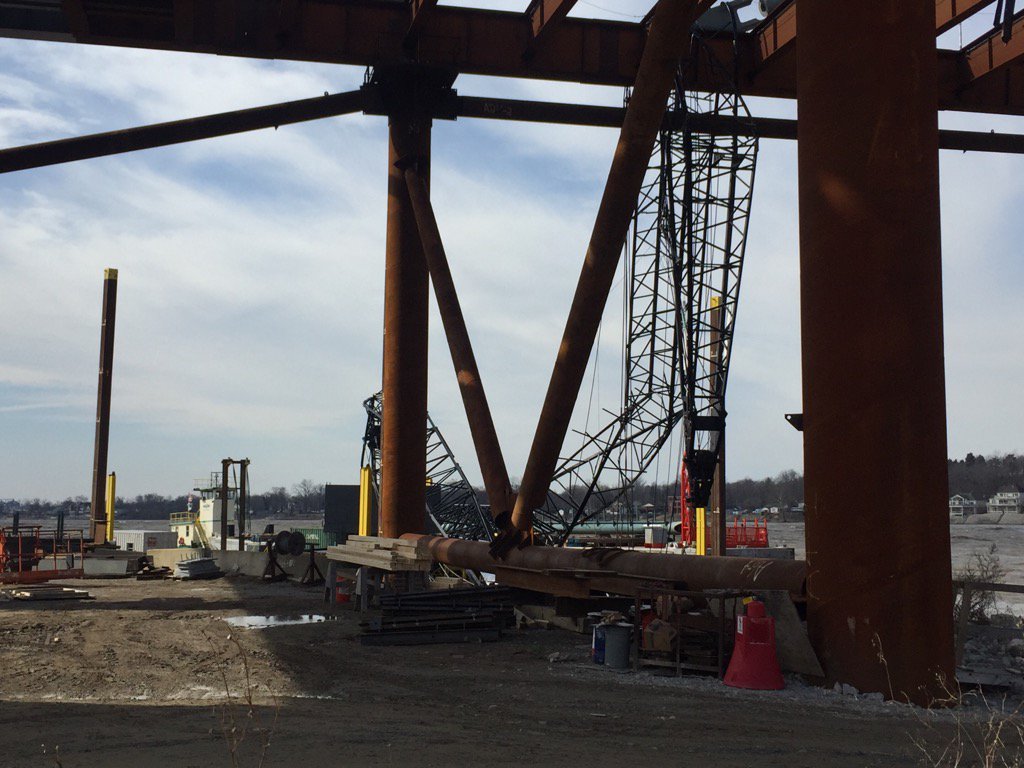
OSHA: East End Bridge companies knew wind gauge was broken months before crane collapse Posted: Aug 19, 2016 3:49 PM EST Updated: Aug 19, 2016 7:08 PM EST
By Marcus Green
LOUISVILLE, Ky. (WDRB) – The companies in charge of the East End Bridge knew a crane had a broken wind gauge months before it collapsed in high winds in February, federal investigators have determined.
The U.S. Safety and Health Administration found that the gauge had not worked since December 2015. Managers with Walsh Construction Co. and Vinci Construction were “fully aware” that the device, called an anemometer, was damaged and failed to install a new one, according to an agency report.
“Instead of replacing the broken anemometer … management asked the crane operator of the ringer crane to confer with the operators of the nearby tower crane to determine the wind speeds,” the report says.
Walsh and Vinci are part of the WVB East End Partners group that oversees the eastern segment of the Ohio River Bridges Project. Spokesman Dan Hartlage said in a statement:
"Working anemometers were on site and in use as required by OSHA."
The report and other documents obtained under the U.S. Freedom of Information Act shed new light on the Feb. 19 incident, which led OSHA to issue two “serious” safety violations and fines of $21,379.
According to OSHA's Nashville office, which led the investigation:
On the morning of the collapse, a worker operating a crane on a barge in the Ohio River sent a text message to another employee asking about the wind speeds. That employee wasn’t working that day, leaving the crane operator without data needed to safely use the crane.
Four workers were on the barge when a “gust of wind” caught the crane’s boom, causing it to fold back on itself. One worker jumped into the river before swimming ashore.
“Knowledge of the prevailing wind speed is critical to the safe operation of the crane,” the report says. “If the wind speed is above a predetermined value then all operations of the crane must stop.”
Investigators said daily logs that noted the broken gauge were kept at the job site and also uploaded to offices in Chicago, where Walsh is based. They claim managers knew the device was broken and had tried to replace it but “the wrong piece had been ordered.”
OSHA cited Walsh and Vinci for not determining whether wind was a factor the day of the collapse and not using a wind speed indicator. The companies also were cited for failing to follow the manufacturer’s recommendations for the angle of the boom.
“The overly steep angle of the boom increased its height, thereby exposing the crane to higher wind velocities,” inspectors wrote. “Exposure of the boom to these higher wind velocities contributed to the collapse of the crane.”